Is there a brand we’d all like to see revive more than Lancia? It may not have the huge sport and racing heritage of Alfa Romeo, the thoughtful individualism of SAAB or all the affordable glamour of Jaguar (two of which are brands still trying to find their place in the 21st century). Yet, Lancia has a history of huge technical innovation, from the first monocoque to the first uses of independent suspension and V6 engines, and a great motorsport heritage in rallying and racing. All this blended with Italian elegance, often with styling by Pininfarina or Bertone.
Commercial luck did not always follow, and Fiat took a controlling stake in 1969. Then came the second episode, blending moderate commercial success, a dominance of world championship rallying and some technical flourishes, which were all subsumed by a reputation for corrosion; followed by a decline into a range of cars that were largely Fiat based and little more than an Italian interpretation of a Buick or 1990s Rover.
The combination of a very tarnished reputation and limited distinctiveness ultimately fed into an ever reducing range. Badging the Europe built versions of the Chrysler 200, 300 and Voyager as Lancias, using old Lancia names, did no one any favours, to say the least. All this resulted in just one model, the Fiat Panda platform based Ypsilon, being available in one market, Italy, for the last nine years. To many, it felt that the Lancia brand should be permitted to retire, and the good memories retained. Much of the last 25 or 30 years could be quietly forgotten.
But Stellantis, under Carlos Tavares, had other ideas. In Europe, Stellantis has Fiat, Citroen, Opel (and Vauxhall in the UK only; same cars, different badge), Peugeot, DS, Lancia, Abarth and Alfa Romeo all present in the volume market, with Maserati as a potential truly upscale brand.
Shuffling these volume brands into order, Sloan ladder style, is not easy. But it goes something like:
- Fiat – entry level, focussed on urban and value, with some style and colour
- Citroen – not far off entry level, focussing now on value
- Opel/Vauxhall – mainstream, affordable, familiar
- Peugeot – something a bit better, with a French style
- Abarth – sports versions of Fiats, and fairly rumbustious ones at that
- Alfa Romeo – premium sports, and Italian
- Lancia – luxury, very limited market coverage
- DS – modern luxury with a French twist
- Maserati – the none-of-the-above choice against Ferrari, Lamborghini and Aston Martin
Call it the Tavares Cascade if you wish, though perhaps now it’s the Filosa Cascade. If you think there are too many, you’re probably not alone. Perhaps we’ll find out more in the medium term.
Lancia is now effectively active only in Italy and almost unknown elsewhere; although sales of the latest Ypsilon are now starting in France, Spain, the Netherlands and Germany. This, a year after Italian sales started; I don’t think records are expected to be broken. But what is an Ypsilon, do you want one and, most importantly, is it a Lancia?
The Ypsilon is a member of the Stellantis CMP/eCMP platform family, which is offered on a potentially bewildering variety. At its core is the second generation Peugeot 208 supermini, first seen in 2019, although the first car of the platform seen was the DS 3 Crossback SUV/crossover. The platform has now spread to the Citroen C3 and Opel/Vauxhall Corsa superminis, the larger Citroen C4 hatch, as a crossover in the Peugeot 2008, Citroen C3 Aircross (to 2024), Opel/Vauxhall Mokka, Fiat 600, Jeep Avenger, Alfa Romeo Junior, the Chinese market only Dongfeng Aeolis, and now the Lancia Ypsilon supermini.
So, the platform offers supermini and crossover options, built on a 100 inch wheelbase (102 inch for the Peugeot 2008) and powered by a range of 1.2, 1.3 and 1.5 litre three cylinder petrol engines, some 1.5 litre 4 cylinder diesels in certain markets, a 1.2 litre petrol with mild hydrid configuration and also an BEV with a 51kWh battery and a range of 245 miles. Not all options are available on all brands, but all have some choices. The Lancia comes as mild hydrid or a BEV. Diesels are now quickly fading away in Europe, and this option is now very limited.
For a week’s holiday in Austria, flying into Salzburg (despite the crowds, still one of my favourite cities), we had a hire car booked, with the expectation of an Opel Corsa, VW Polo or possibly a Kia. But we got a surprise – the first Lancia Ypsilon I had seen, and with Italian plates too. Ironically, the first car we were given was Citroen C3 Airstream, but the boot lock refused to release so a swap was quickly arranged.
“Our” Lancia was a mild hybrid, so 1.2 litre three cylinder turbo petrol with a combined output of 110hp, driving through a six speed DCT dual clutch transmission, with regenerative braking. First impressions were, though, slightly mixed.
Looking out of the office window, I initially didn’t recognise it. It was parked in a line with various other cars, including some from insurgent Chinese brands and my first internal thought was “that must be a Suzuki we don’t see in the UK”. Oh dear – more training required (and better glasses to read the large letters?). Or perhaps the visual appearance is not strong enough. It is calm, arguably stylish and maybe sophisticated but also lacking a little in impact; at least from the front, in the white metallic shade and with no lighting on, in a poorly lit car park. Impressions at the rear were a lot stronger – taillights and a rear hatch profile based on the Stratos were always going to be a statement, even if many might miss the link to the original inspiration.
Inside, the immediate impression was stronger. There may be many Stellantis bones and details in this car but the first reaction to the Ypsilon is that it is different, stylish, modern and that many of the materials are a bit better than you might have expected. Visually, it is dominated by the semi-circular shelf (we referred to it as the coffee table) protruding from the dash. It was ideal for holding a mobile phone and indeed had a wireless charging facility on it, and for holding your picnic cups and biscuits. Otherwise the console had two centre line cupholders and a large recess under the coffee table that held small bags, and the power and USB sockets. They took a bit of finding though.
There are two screens, with the usual configurable tricks and some truly Italian foibles. The screen ahead of the driver, if you’re not using the radio, seemed to be half empty with the digital speedometer taking up the top half only. The audio details showed below, if you were using the system which we rarely bothered to. The centre screen would mirror a mobile phone and controlled all the usual configurable items, including the audio. The heat and ventilation was on the screen, as well on the line of toggle type switches below. It was difficult to decide which was the expected primary control – the small, poorly labelled and illuminated switches or the awkward to use screen. I have spoken before about heat and ventilation controls on screens and my opinion has not changed – please give us the big knobs and supporting buttons back.
There are some other ergonomic weaknesses – as well as the poorly sited heat and vent controls on the toggle switches and the thick screen pillars, the electric parking brake control is partially hidden and does not have an auto-hold. The otherwise fine adaptive cruise control has controls that are not intuitive and the associated variable distance control is seemingly AWOL. The reversing camera worked well, and was matched by one on the front that only came on when we came out of reverse.
However, once you’ve settled in, you start to notice familiar Stellantis and PSA hardware. The column stalks, the window switches, the gear shifter and handbrake buttons, the audio and heater buttons….. you soon realise that this is a 208 with a makeover. Seeing stalks and buttons that PSA and Stellantis have fitted to 10 million cars and counting does not help any exclusive Lancia schtick. The 208 is not a bad place to start, indeed a fully competitive place, but this is still a makeover. Then you look closer still, and realise that the windscreen and roof pressing are pure Peugeot and common to the Opel as well, and you suspect the doors could almost be swapped in. Creases and surfacing might not work, but you suspect the handles and hinges would. This car had sober grey trim, but brighter colours are available, echoing some of the choices Lancia made in the 1970s
The car also asked you to create a profile every time you got in. We never bothered, clicking “Guest” usually. When we clicked “Profile 1” there seemed to be no difference. Perhaps if we’d persevered it would have been beneficial, but for a rental car it seemed an unnecessary faff. We had an instance of the tyre pressure warning alerting us to an issue. Checking the tyres at a service station showed no problems but the reset was impossible to find until I spent 20 minutes the next morning prodding at the screen. The tyre pressure warning reset proved to be under the Customisation menu for Profile 1. No, me neither. But you can change the colour of the ambient lighting at the start up screen. And what is the reason for keyless start without keyless entry? You just end up with the key somewhere, rattling in a cupholder or door pocket.
Though not huge inside, there was sufficient room in the driver’s position, which was easy to tailor to my almost 6ft shape. The window was perhaps a little closer than you’d really like but that seems a reasonable compromise for a compact overall size. Rear space looked quite tight and no more premium than a nicely trimmed 208, but if you need more space there’s plenty of choice in the Stellantis crossover range. The boot handled our luggage easily, though the early impressions were dented by the rear shelf being as cheaply made as possible and feeling no more special than a Citroen, and also for having a broken clip on the support cord. Not big, but a flag that this was an ordinary car, really.
Driving the Ypsilon is mostly a satisfying experience. We were driving in Austria and Germany, where the roads are predominantly smooth (very smooth and undamaged by UK standards) so the ride would have to be very poor to be criticised. A French car made to be more comfortable is very unlikely to ride badly on smooth roads, unless it rolled a lot, which it didn’t. The steering was less special, feeling only vaguely communicative and, after my Alfa Romeo with its very direct steering, very low geared at close to over 3.5 turns lock to lock. But the car gripped well, rolled little and didn’t understeer into the distance. Refinement was good, with the engine only rarely making a strong impression, volume wise. You’re reminded whenever you start off that it is a very mild hybrid though – the engine starts, then stops while you select gear and then while it decides if it needs to help you manoeuvre, which it invariably decided it did, and so it started up again. Economy was good, if not tremendous. Over 1500 km we saw 50 mpg (Imp)/42 mpg (US) which felt acceptable for the type of running but not game changing.
The other big impression from driving, for someone not regularly using a hybrid or electric car, was the regenerative braking. Effectively, much of your driving could be with one pedal; apart from sharp braking and the final stop, most braking could be accomplished by lifting off, maybe not fully initially, and slowing that way rather than using the friction brakes. Lift off at 30mph and the effect was quite marked and would definitely pull the car up. Several times I lifted off in traffic as the car ahead slowed for a red light and then had to re-apply a bit of power to get closer. I quickly got the plot, but it was very different initially.
But what did we get that you could not get in a Peugeot? That too has a sharp modern style outside and in, with the Peugeot i-Cockpit featuring the low mounted, small steering wheel and instruments you view over. It comes in a range of trims and options, a wider engine range and some striking colour and trim combinations. Even looking at www.Lancia.it, it’s hard to see the pull of the Lancia to anyone other than a marque devotee with a love of subdued metallic colours and something a bit different.
Yes, you get distinctive and original light signatures, some styling effects that are not cliché and decent quality trim. It rides nicely enough, it’s efficient enough and handles well enough, and has more kerbside (or curbside) appeal than an Opel or Vauxhall. But, sadly, I have to conclude that that is probably not enough to make me choose it for even the modest premium over the correctly specified Peugeot or to justify it to anyone as being a modern Lancia. I suspect it exists largely for the Italian market – indeed we got admiring glances (and one long interior peer) in Salzburg from Italians – but also feel that it will have difficulty getting meaningful attention elsewhere.
But there is more to a Lancia than being a Peugeot with trinkets; if Stellantis were brave they’d probably agree and allow Lancia a honourable retirement. Sadly, somehow, after spending a week with this Ypsilon, that feels like the honourable thing to do. And many of us will be very disappointed.

















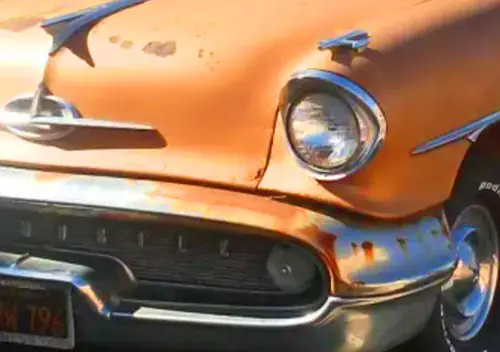
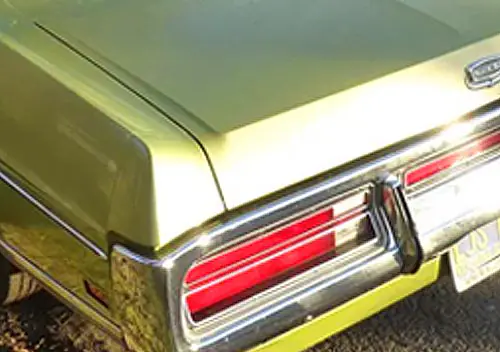



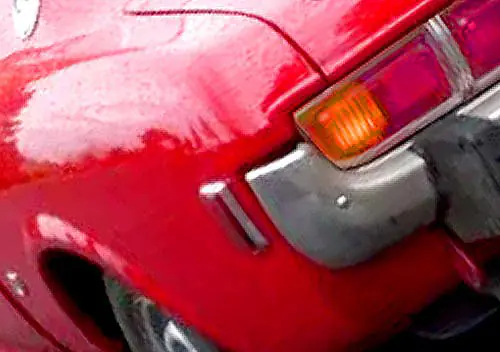

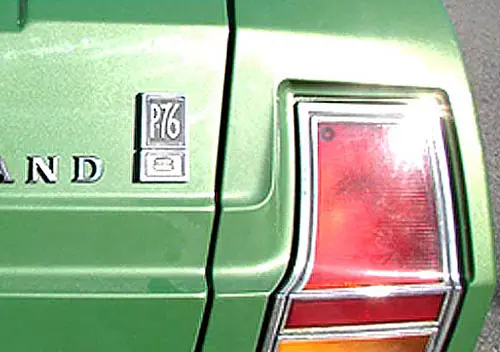
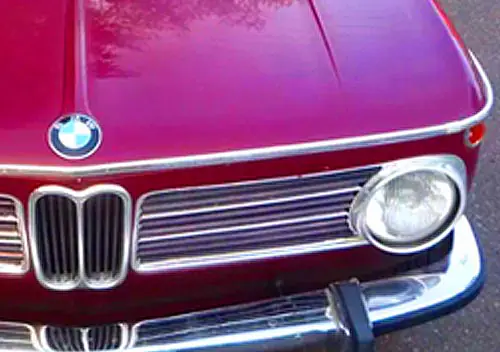


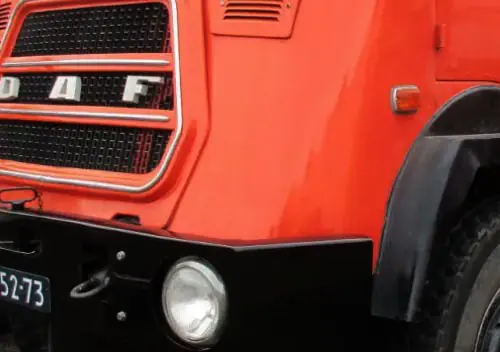
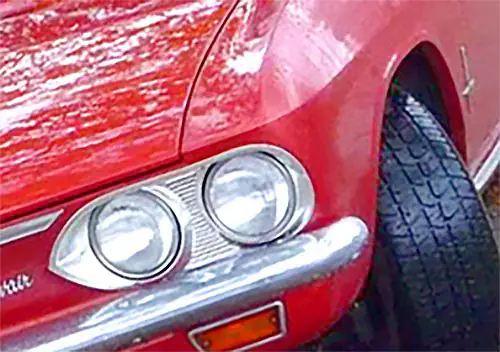
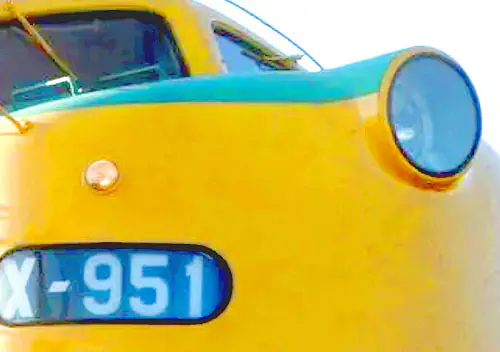
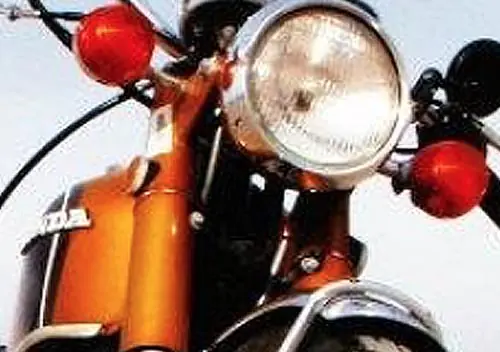
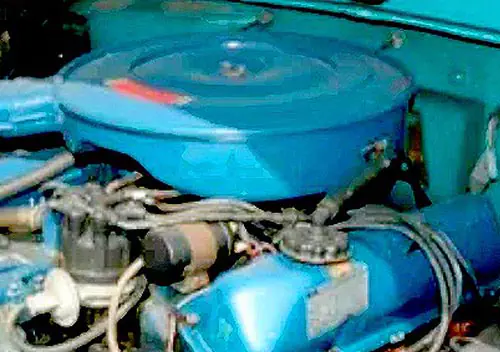



The Vauxhall Corsa, the UKs fastest depreciating car. From your review it doesn’t look like we will be seeing a RHD Lancia or Chrysler Ypsilon anytime soon.
Is badge engineering like this ever worth the effort? Not just Stellantis but VW as well. If they put all that development time into optimising one version of a platform wouldn’t everybody get a better and more affordable car?
Hmm, not if you’re a shareholder. VW sold about 3 million last year: Audi sold about another 1.7 million of (let’s face it) the same cars for a whopping premium.
Sad but somewhat inevitable .
-Nate
Nice piece of writing. A thorough car review, and the corporate overview. My mind looks at the front end styling of modern cars, and quickly does an ink blot test. What does it remind me of? In this case, one of those bazaar sci-fi space creatures found in 50’s B movies. I still enjoy those films.
When I read about things like regenerative brakes, electronic parking brakes, auto-hold, adaptive cruise control,etc, etc, I always wonder what it’ll be like to try to fix these things when the car’s 15 years old – like the newest of the three bangers I own.
It actually looks like a Fiat 500, not a real Lancia.
I think Lancia’s glory years ended at the beginning of the new millennium.
The last Lancias sold here in the UK wore Chrysler badges; quite sad given their past glories. This looks unlikely to make much of a revival.
The Ypsilon, the last Lancia standing, has sold well in Italy, and the last I hear Stellantis wants to increase Lancia’s footprint outside of the one remaining country it’s sold in into – well, a few other European countries. I think Stellantis has too many brands to be able to give each one a distinct place in the automotive market, even given their current strategy to only allot a few vehicles to each brand rather than a full lineup. Despite all of their brands, there are several key segments of the market that Stellanatis doesn’t strongly cover, like a mainstream upscale/luxury marque to take on Lexus or Mercedes – Alfa is too niche; DS not established enough.
I thought Maserati was the Mercedes fighter. At least it is in the US although it didn’t put up much of a fight. I always thought selling the Chrysler 300s and 200s in Europe as Lancias was a good move. Ja, oui, si, it’s a hemi. Luxe up the interior a bit and you have a car that was not capital intensive for something that’s more of a Lancia than this placeholder. I guess this is Europe’s Chrysler Pacifica, peeing away whatever value the brand had.
I’ve read Lancia still survives largely because the prior-gen Ypsilon III outsold all Alfa Romeo models combined worldwide year over year, despite being a single-model marque only sold in Italy in its later years of production. Clearly, Italians still harbor some fondness for Lancia, or at least for the sort of high-spec supermini the Ypsilon represents.
No, it isn’t a Lancia.
It’ll be interesting to see what Stellantis’ new CEO does with its surfeit of brands. Some consolidation is inevitable. It’s a bit hard to see a viable longer-term niche for Lancia.
Shortly after Stellantis’ formation, it was announced they’d commit to allowing each of their combined marques a decade to make a case for their continued survival beyond that timeframe.
I keep thinking the way things may pan out in the long run, they’ll eventually focus each marque on the national market(s) where they’re most recognized and well-regarded, rather than trying to cover every market with model variants under every marque, or paring down their marque range to cover every market.
It won’t be a case of cynical badge-engineering (a la ’80s GM), where nearly identical models are sold under different marques differing only in badging and minor variations in trim/spec, or where a model developed by/for one marque gets rebadged/retrimmed as another.
Rather, different marques’ models will have their own fully distinctive body/interior styling, and maybe some body variants limited to specific marques, along with the usual tailoring of tuning/spec/trim to suit each marque’s character and national-market preferences, wrapped around a range of common underlying model-platforms.
So the same fundamental, say, C-segment model may be sold as a Peugeot in France, Opel in Germany, Vauxhall in the UK, Fiat or Lancia in Italy, Dodge in the US, etc., all looking quite different and some even feeling rather different to drive, but all sharing nearly everything in common under the skin.
2nd production car to use monocoque construction, 1903 Vauxhall was the first, its a generic car with Lancia badges, it has some of the switchgear found in my car but its half the size with better fuel economy, Getting it fixed should it fault should be easy enough your nearest dealer should have the diagnostic software, my nearest Stellantis agent had a C6 parked outside the workshop when I was there but they had never seen a C5 before my one, they plugged a laptop into it and did the hocus pocus and my car runs fine again.
DSG would be a NO from me, I really dont like them and they have a very poor rep.
It has nice tailights.
It’s poor effort. Given the economies of the millions sold in other forms, why didn’t they risk chucking a bit of money at it (and whilst at that, chasing down the stylist who put the front on upside down and didn’t even finish it)? It takes more than some black bits and a missing doorhandle: why not a longer, curved-down bonnet and a bigger bumper for some fake-Stratos effect or somesuch? And inside, put in some bespoke aluminium stalks, switches, better plastics here and there, perhaps some bold old-style dials. Class it up a bit, turn up the wick on the engine, add a slightly farty exhaust, advertise it as sports-luxury (with Tradition) and see if a bit of an Audi-effect silk couldn’t be sewn from the French workman’s ear?
Oh, who am I kidding? Vale, my lovely old Lancia. Requiescat in pace.
Very interesting article, thanks Roger. We get the Pug/Cit/Opel models here and I’ve driven the 208, 2008, C3 and Aircross, but have only seen the Ypsilon online and in blue. I thought it looked quite interesting but in appliance-white like your rental, the Peugeot bones are very strong.
In your front 3/4 photo, and the Ypsilon looks like a 208 with a lightly squared off front end and a black plastic bug-deflector on the bonnet. The back end is modern and cool (I love the Stratos nod!), and the interior is nice – I do like the coffee table! – but drab without the brighter colours.
I don’t dislike the Ypsilon at all, but it doesn’t seem as special as I’d hope. A C3 looks and feels dissimilar to a 208 inside and out, the Y not so. It’d be an understandable compromise if the Y was intended as merely a mass-market trigger to fund a magnificent Lancia rebirth, but with so many Stellantis brands to chose from, ‘Peugeot with trinkets’ seems, sadly, quite appropriate.
It appears Stellantis is trying to move the Ypsilon up the ladder since the previous generation was built on the Fiat 500 platform and had quirkier styling. The new (2024 onward) Ypsilon like the review car is built on the Fiat 600 platform.
For the curious with access to PBS streaming in the US in season one of “The Good Apprentice” of L’Allieva in the original Italian the Alice and Marco drive a third generation Ypsilon.
As with anything full of screens I am left cold. Our Mazda CX-5 had a rather basic infotainment and navigation screen, and our Fiat 500 is the Pop with no screen as standard, and no desire to add one